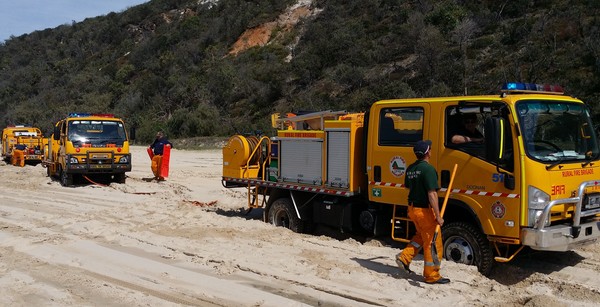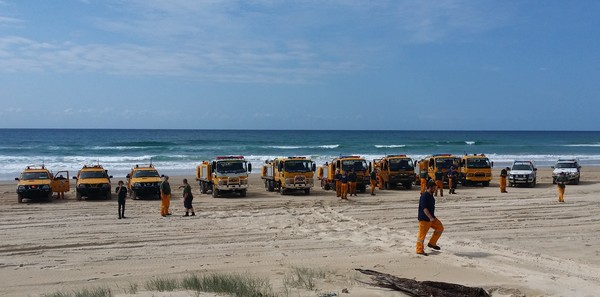By ANDREW BELL
When travelling beyond the areas normal vehicles can access, the terrain can be both threatening and dangerous to the unwary.
Ensuring safe arrival is a priority but more so when transporting six fire-fighters, 3500 litres of water and a load of ancillary equipment to fight a bushfire in the back blocks of the hinterland or along the very edge of the Sunshine Coast.
It is with this thought in mind that nominated truck drivers from the Doonan Brigade along with vehicles and drivers from Black Mountain, Eumundi, Kenilworth, Yandina, North Arm, Belli, Bli Bli, Teewah, and Glass House Mountains Brigades attend a one-day four-wheel drive workshop on the Noosa North Shore.
On the beach, tracks and outskirts of Teewah village the crews were instructed in the skills to get the vehicles safely through a variety of environments and situations to fight remote fires.
It was especially relevant for the Teewha Brigade because Teewah Village is only accessible by a 10 kilometre drive along the beach up from Noosa North Shore or a 50km drive down the beach from Rainbow Beach.
In any bushfire situation, support crews may well have to reach Teewah on this long sandy access route which is designated a main road and is subject to the same road rules as any other in the district.
The training was about preparing crews to be able to drive in sandy conditions and to be able to recover vehicles safely if they become bogged.
This is essential for most brigades along the Sunshine Coast because crews regularly attend bushfires along the beach dunes and can be deployed as strike teams to any of the sand islands in the south-east of the state.
Members covered a number topics including concentration and attitude, risk taking behaviour, fatigue awareness and time management, effects of speed and vehicle loading.
Drivers were given the ability to identify and avoid hazards on off-road situations, to understand the effects of fatigue when driving over rough terrain, to understand correct tyre pressures and when to alter them, and safely operate the recovery equipment that each vehicles carries.
The recovery training included both self and combined rescues.
The course was very hands-on and central to its success was the practical application of off-road driving techniques, including hi-low range gear operation over a variety of terrain, including sandy / boggy roads and water crossings.
The brigade thanked Ken Stockton from Area Office and Clay Stjernqvist 1st Officer of Teewah RFB, who conducted the awareness training, for their time and effort.










